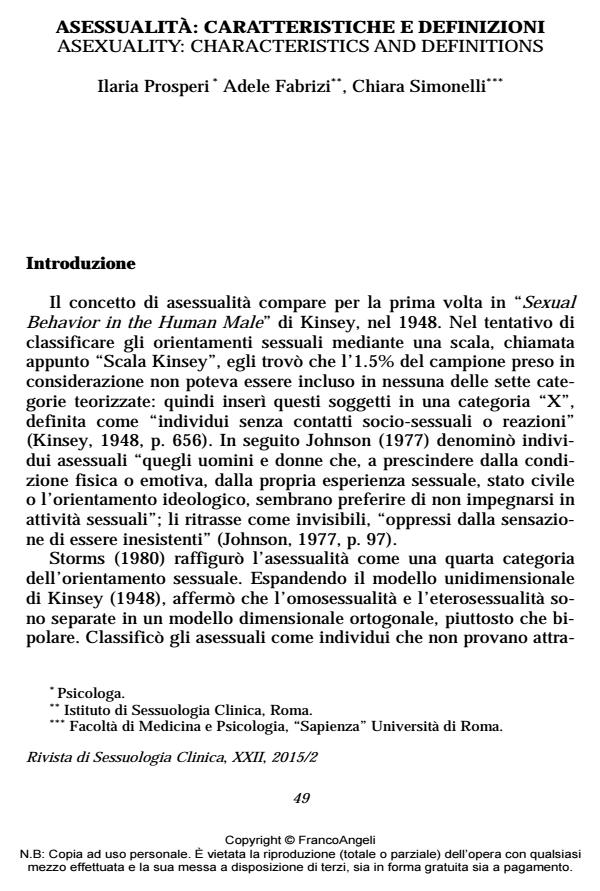Asexuality: characteristics and definitions
Journal title RIVISTA DI SESSUOLOGIA CLINICA
Author/s Ilaria Prosperi, Adele Fabrizi, Chiara Simonelli
Publishing Year 2015 Issue 2015/2
Language Italian Pages 34 P. 49-82 File size 117 KB
DOI 10.3280/RSC2015-002003
DOI is like a bar code for intellectual property: to have more infomation
click here
Below, you can see the article first page
If you want to buy this article in PDF format, you can do it, following the instructions to buy download credits

FrancoAngeli is member of Publishers International Linking Association, Inc (PILA), a not-for-profit association which run the CrossRef service enabling links to and from online scholarly content.
Although there has been increasing interest in asexuality during the past decade, still little is known on this topic. Three different approaches have been proposed, to define asexuality: a definition that is based on sexual attraction, one on sexual behavior, one on self-identification. Depending on the definition used, reported prevalence rates range from .7% to 6.1% of a U.S. sample. Many authors suggests that asexuality can be better understood as a sexual orientation, distinguishing from sexual dysfunction, as hypoactive sexual desire disorder. Socially, asexuality attracted denial and resistance due to incompatibility with heteronormative societal expectations; asexual individuals may face the same social stigma experienced by other sexual minorities. This article explore the characteristics of asexuality, hypotheses on the psychophysiological etiology and review biological, psychological, and social factors associated with asexuality.
Keywords: Asexuality; sexual orientation; hypoactive sexual desire disorder; sexual attraction; sexual minorities; asexual community
Ilaria Prosperi, Adele Fabrizi, Chiara Simonelli, Asessualità: caratteristiche e definizioni in "RIVISTA DI SESSUOLOGIA CLINICA" 2/2015, pp 49-82, DOI: 10.3280/RSC2015-002003